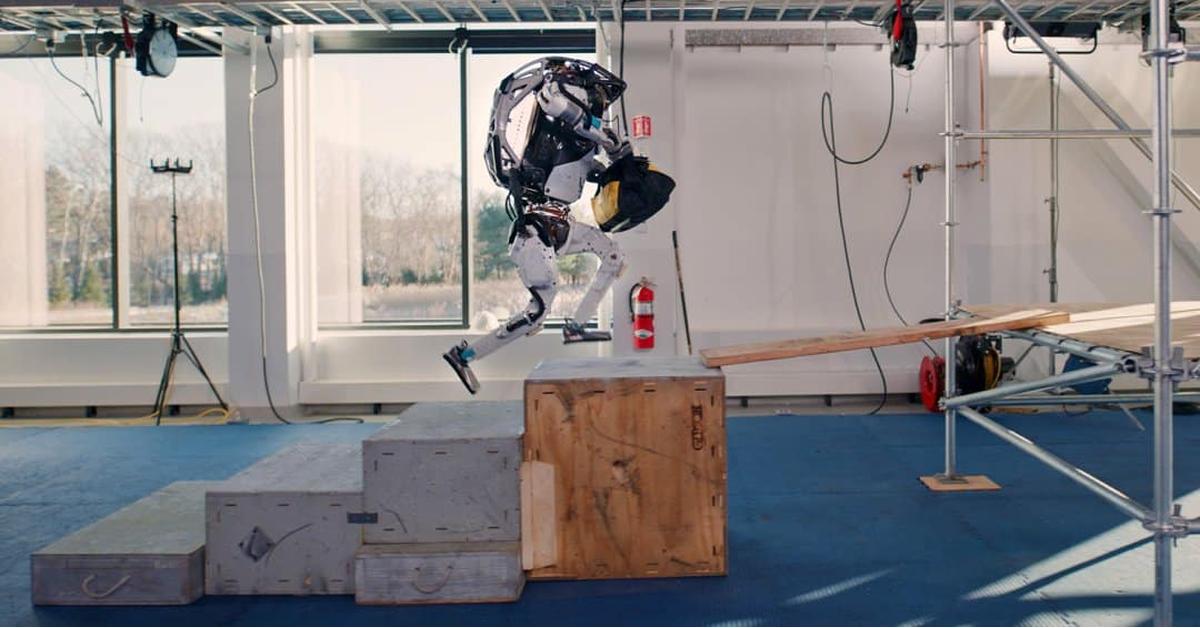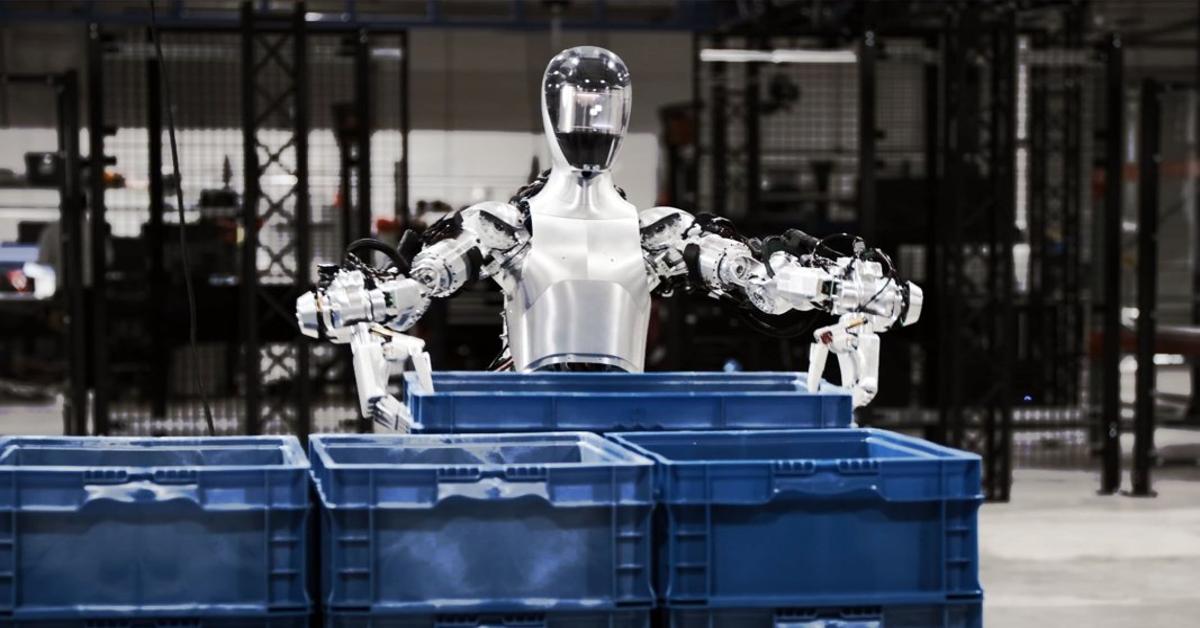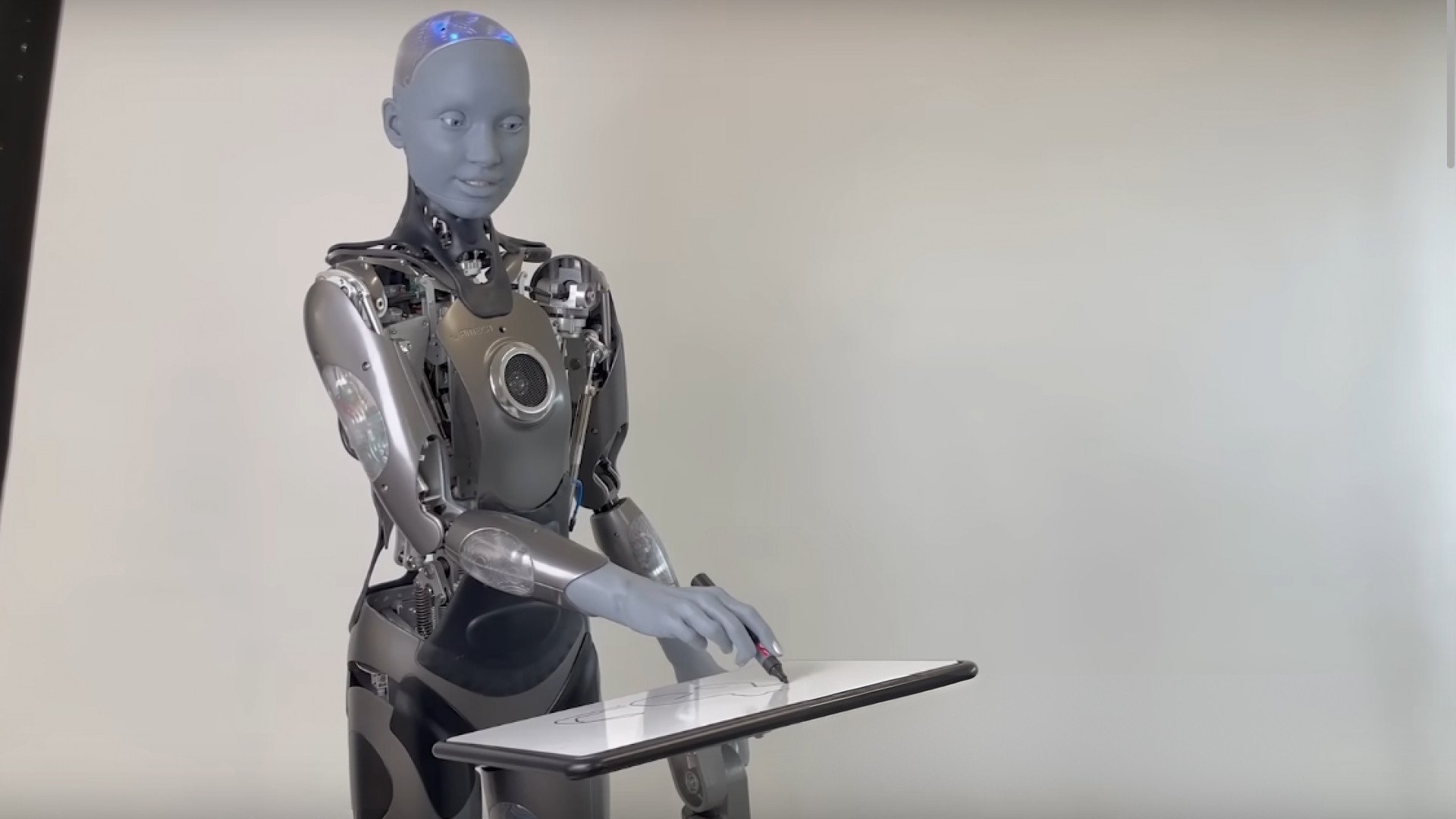
The total number of amazing humanoid robots under development is breathtaking.
What was once was a wasteland of academic projects and defense contractor experiments is now turning into an entrepreneurial ecosystem with numerous humanoid robot companies reaching unicorn status while pursuing a multi-trillion-dollar labor market.
Like the Optimus and Figure 01 robots, companies such as Agility Robotics, a spin-out from Oregon State University; Sanctuary AI founded by Geordie Rose, Suzanne Gildert, and Olivia Norton; and Barcelona-based PAL Robotics are building and demonstrating human-sized bipedal machines strutting their stuff.
Others, including Hanson Robotics, are using the latest AI and speech recognition technologies to create emotive interactions and intelligent conversations with people.
But over the next two blogs in this series, I’m going to explore two unique robots that deserve special mention: Atlas by Boston Dynamics and Ameca by Engineered Arts. (NOTE: Ameca will be joining me as part of the AI and Robot Faculty at my upcoming Abundance Summit.)
Today, I’ll discuss the founding story, evolution, and latest developments of Atlas, perhaps the most popular robot on the internet.
Let’s dive in…
The Birth & Evolution of Atlas
Thirty years ago, nestled within the innovative corridors of the Massachusetts Institute of Technology (MIT), a vision was taking shape.
Marc Raibert, then a professor at MIT, was on a journey to push the boundaries of robotics. His expertise and passion for dynamically moving systems paved the way for the formation of Boston Dynamics in 1992. This spin-off wasn't just another academic venture; it was Raibert's commitment to bringing articulated robots into reality, robots that could traverse any terrain just as easily as a human.
Reflecting on those early days, Raibert shared a surprising truth:
"The truth is, at that point, it wasn’t going to be a robotics company at all. It was going to be a modeling and simulation company. I’d been a professor for about 15 years by then and was really well funded (heavily by DARPA [the Defense Advanced Research Projects Agency]), but I wasn’t sure that the funding was going to continue."
The path to robotics, as it turned out, was not straightforward. A collaboration with Sony, initially secretive, involved work on the AIBO and QRIO robots, applying Boston Dynamics' modeling tools to choreograph robotic movements. It was the BigDog project, however, that marked a significant shift.
Raibert recalls, "And then we decided to write a proposal for BigDog, and the whole company changed almost immediately. It felt great to return to building machines, and I’ve never looked back."
BigDog epitomized the company’s prowess in robotics. A quadruped robot, it was designed to assist soldiers by carrying heavy loads over rough terrain. It was robust and resilient, qualities that would become synonymous with Boston Dynamics.
Today, the star of Boston Dynamics is undoubtedly Atlas, a humanoid robot that has captivated the online world with its parkour skills and backflips. Atlas isn't just another robot; it's a symbol of the apex of robotic agility and adaptability. Its capabilities extend far beyond mere programmed routines.
Atlas represents a paradigm shift in robotics. As we journey further into the narrative of Boston Dynamics and its remarkable Atlas robot, we delve into the nuances of what makes this humanoid machine stand out in a crowded field of advanced robotics.
This machine, with its human-like form, demonstrates an ability to engage in complex physical tasks that were once thought to be the exclusive domain of humans.
The ingenuity of Atlas lies in its unparalleled maneuvers. It's not just about the ability to perform backflips or run at impressive speeds; Atlas brings a level of fluidity and precision to its movements that is almost balletic.
This finesse is not just for spectacle; it embodies the culmination of years of research and development in mechanical engineering, software algorithms, and machine learning.
For example, in a video released by Boston Dynamics last month, Atlas is shown picking up and placing automotive struts, using its new hands, each of which sports a set of 3 fingers with 2 joints.
As The Robot Report pointed out, “The significance of the demo is that Atlas performs all of the object recognition using the robot’s onboard sensors. Atlas acquires the automotive struts, using its grippers from a vertical storage unit, and places them horizontally onto a flow cart.“
Following the demonstration, Marc Theermann, Chief Strategy Officer of Boston Dynamics, posted on LinkedIn: “We considered making coffee or picking up an egg, but decided to focus on real world manipulation challenges instead.”
The viral videos of Atlas—showcasing everything from its parkour skills and synchronized movements with other robots to now handling various types of equipment—are not just demonstrations of technological prowess.
They are a canvas on which Boston Dynamics paints the future of robotics.
From Robotic Roots to Robotic Revelations
But what truly sets Atlas apart is its purpose as a research project.
While other robots are designed with specific commercial applications in mind, Atlas serves as a beacon for exploring the outer limits of what is possible in robotics. This freedom from the constraints of immediate commercial viability allows Boston Dynamics to push Atlas to new heights, exploring complex interactions with the environment and refining its understanding of robotic motion and balance.
This commitment to research and development is further exemplified by the establishment of the Boston Dynamics AI Institute.
The Institute's mission is not just to develop more advanced robots but to explore the very fabric of robotic intelligence and interaction. The focus on Athletic AI and Cognitive AI signifies a deeper dive into making robots that can not only move with precision but also think and make decisions in dynamic environments. This blend of physical dexterity and cognitive ability is at the heart of the next revolution in robotics.
In the words of Marc Raibert, the Institute is a step towards a future where robots are not just tools but partners in our daily lives.
He envisions a world where robots are seamlessly integrated into society, enhancing our capabilities, and working alongside us to tackle challenges that were previously thought insurmountable. The emphasis on ethics and policy, as well as organic hardware design, highlights Boston Dynamics' commitment to responsible and sustainable development in robotics.
As we look ahead, the legacy of Boston Dynamics and the ongoing evolution of Atlas stand as a testament to human ingenuity and the relentless pursuit of innovation.
Marc Raibert's vision, from the humble beginnings at MIT to the towering achievements of today, continues to inspire and challenge our understanding of what is possible. In his vision, robots like Atlas are not just marvels of engineering; they are harbingers of a new era where the lines between human and machine capabilities are not just blurred but redefined.
Why This Matters
As Marc Raibert explains, "Robotics is not just about building machines; it's about creating possibilities.”
Here’s how he sees the creator of Atlas fitting into the broader humanoid robot landscape:
“At Boston Dynamics, we're not just engineering the future; we're reimagining it. Every step Atlas takes, every leap it makes, brings us closer to a world where the harmony between human and machine unlocks potential we have yet to imagine."
In this narrative of progress and possibility, Boston Dynamics is an inspiration for innovation, challenging the status quo—inviting us to envision a future where robots like Atlas don't just exist in the realm of science fiction, but are an integral part of our everyday reality, reshaping our world and the way we interact with it.
In the next blog in this Age of Abundance series, we’ll discuss another unique humanoid robot that’s making a special contribution to the field: Ameca by Engineered Arts.
70% of all cancers that are fatal turn out to be the result of cancers that are not routinely tested for by today’s medical system. Today, advanced diagnostics are able to evaluate your health on a regular basis, with the goal of finding disease at the earliest stage possible. Every year, I go through a Fountain Life “upload” as part of their APEX Membership program, and I urge you to do the same. Get started with Fountain Life and become the CEO of your health:
I discuss how AI, Robotics, and other exponential tech are creating a world of abundance on my podcast. Here’s a conversation I recently enjoyed:
A Statement From Peter:
My goal with this newsletter is to inspire leaders to play BIG. If that’s you, thank you for being here. If you know someone who can use this, please share it. Together, we can uplift humanity.
Topics: Abundance Entrepreneurship Abundance 360










